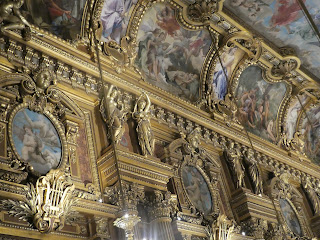There's a new exhibition in LA at present, not that I shall be seeing it as I am nowhere near. The last in London to my recollection was
Poor Old Tired Horse at the ICA in 2009. Worth a rethink? Perhaps.
So, what exactly is it? Is it art? Is it poetry? Is it neither? Is it the bridge between the two? Are any of these definitions useful?
Firstly a very brief potted history - people have been making words look attractive on the page for hundreds of years before the Concrete Poetry movement of the 1950s-1970s. For example, all of those beautiful illuminated mediaeval manuscripts; the Books of Kells, books of hours and so on, through to Elizabethan Labyrinth poems, to elements of Sterne's Tristram Shandy, Lewis Carroll's Mousetail from Alice in Wonderland, and the work of Pound and cummings. What are these all about?
In the simplest terms the words are turned into a picture or representation beyond just their letters, the purpose of which is to enhance the effect of the poem for the reader.
This seems to be one kind of possible extension to any poetic practice of considering the way the words look on the page either through formal poetry, or choosing the lineation in free verse, such as more recently
Philip Gross' Amphora.
If all forms of poetry try to do this, then all poetry is concrete in this sense. However, much of what we consider to be concrete poetry lacks something: read it out loud and the effect is lost, as it is essentially a visual form, lacking sound and often meaning.
But what might make it art? Its visual nature, certainly, and the fact that it uses words and typographical elements rather than colours or images, does not reduce its status, even if no pictorial representation is produced.
Thus we might conclude that it is neither poetry nor art, or both as some kind of hybrid, which for me points to the rather otiose nature of such definitions. As an entertainment for the eyes, a provocation of ideas and a demonstration of wit, let's just enjoy it, shall we? Here are just some of my personal favourites (more to follow, so check back soon):
Ian Hamilton-Finlay (very hard to choose just a couple!)
Mary Ellen Solt:





















